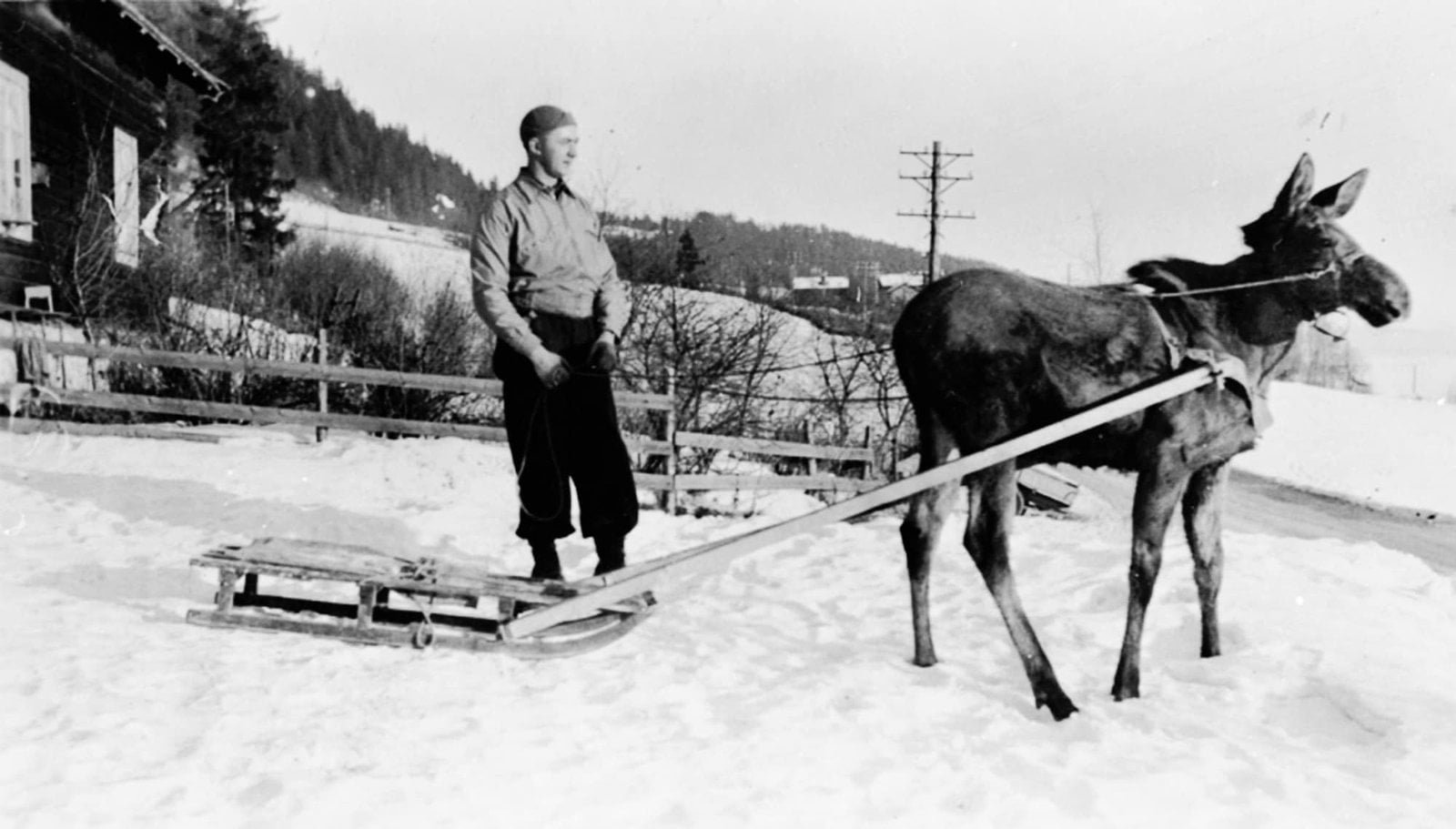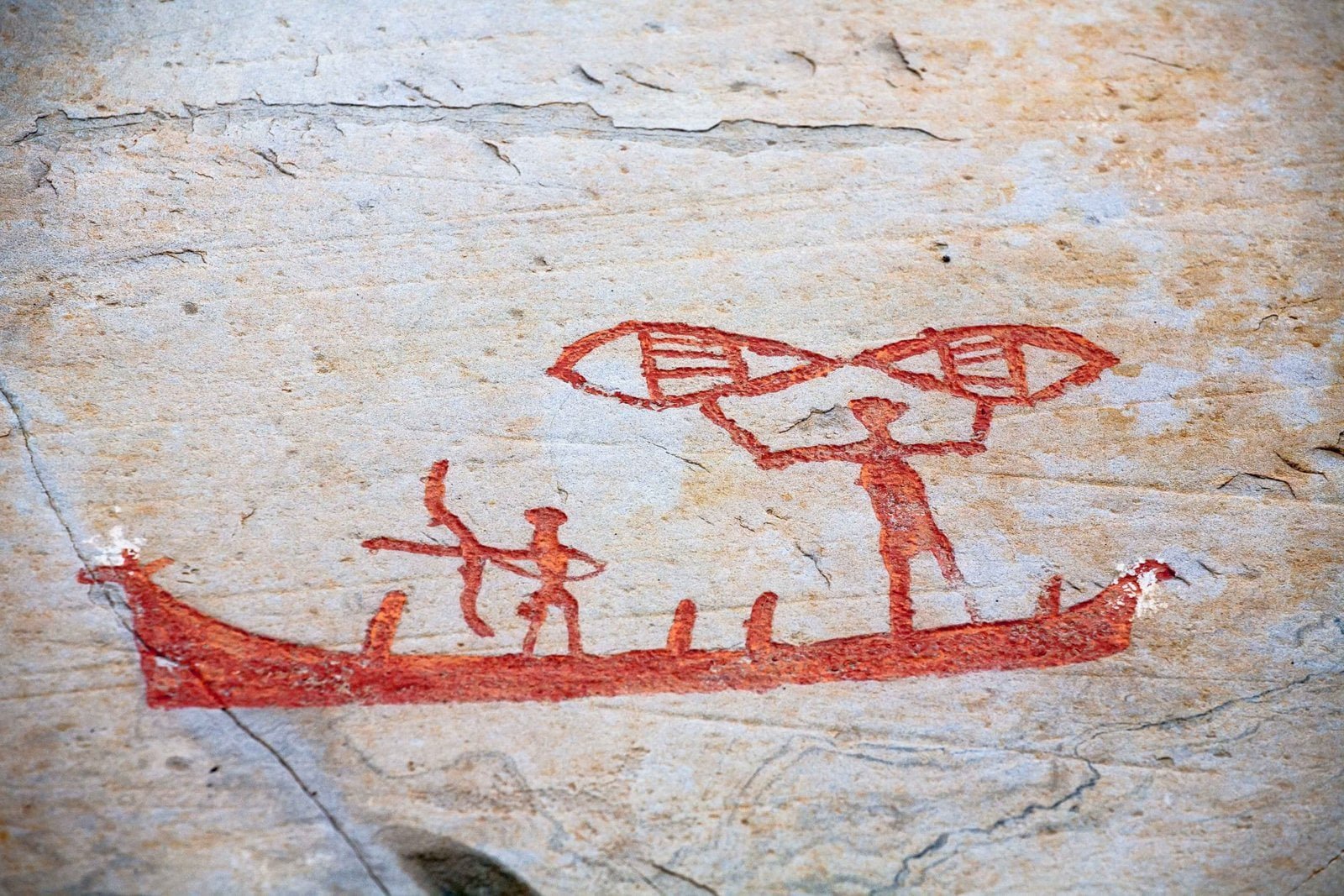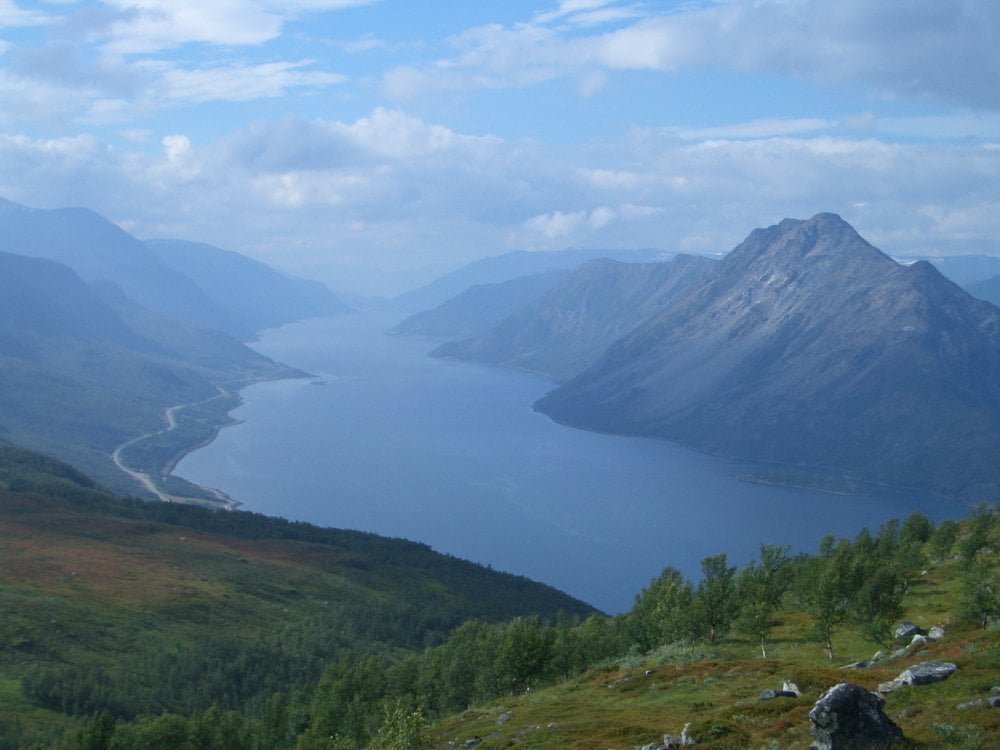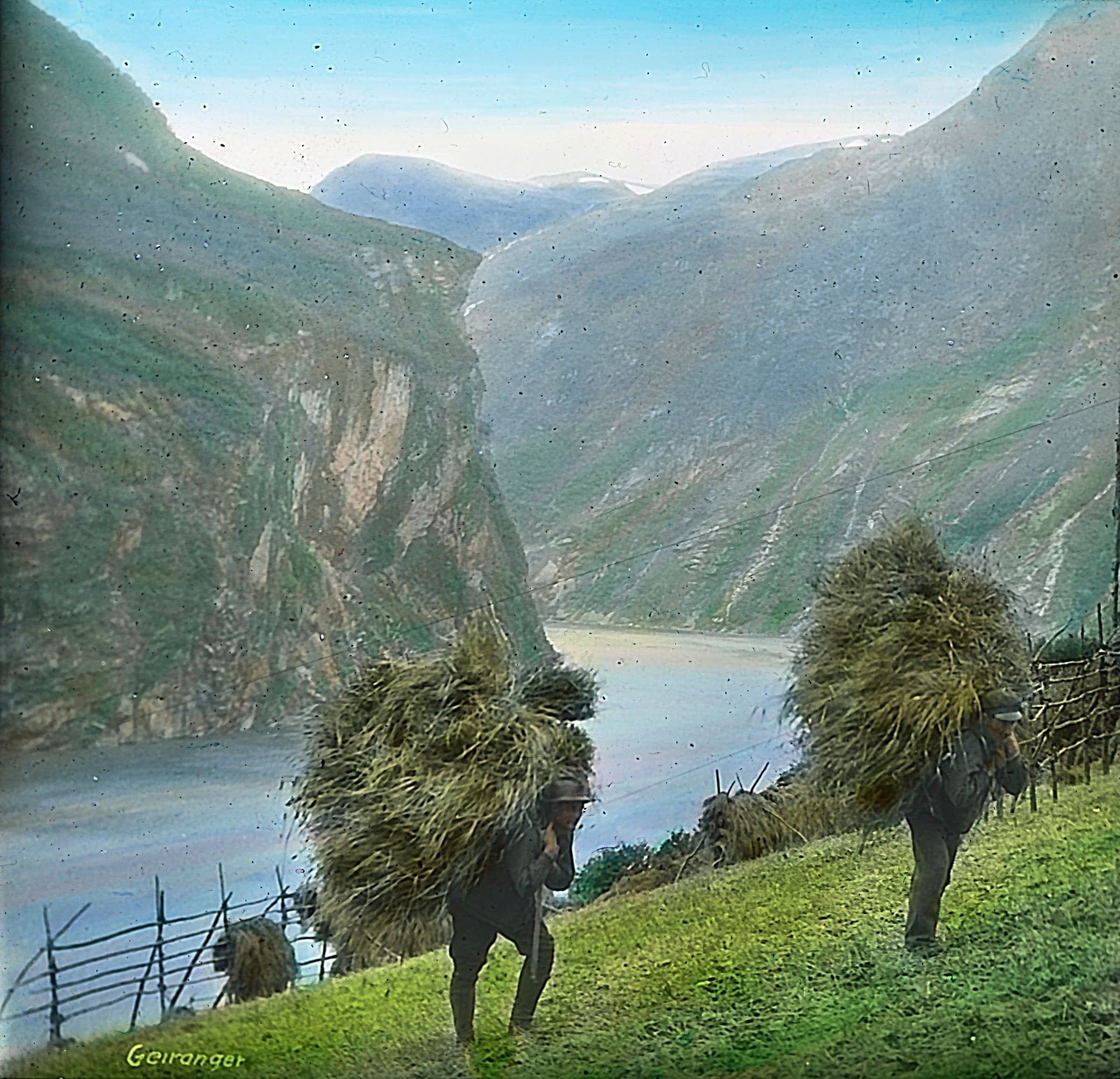Locked in by the landscape
The Norwegian Fjord Horse, with its ancient features and markings, has roots that stretch back thousands of years.
Its original – and inaccessible – west-Norwegian habitat, is believed to have protected the breed from too much external influence.
A limited number of natural predators in this area, may also have allowed the breed to remain wild for much longer.
The Norwegians call it a fjordhest – a fjording – or a vestlandshest.
First came the goat – then the Fjord Horse
Historically, Norway’s coastal population lived on small farms, and were often fishers first and farmers second.
Until not too long ago, the landscape was roadless and wild.
Any transportation had to happen by boat – or on steep, narrow, and sometimes treacherous footpaths.
Old tales say about the creation of the ancient footpaths: first came the goat climbing through the bushes, then the Fjord Horse.
Packhorse and workhorse
The Norwegian Fjord Horse’s whole anatomy is shaped by millennia of living in a steep and demanding landscape.
Historically, the breed is relatively small, and, with its robust frame and strong legs, it moves like a master through a rocky and demanding environment.
Throughout history, it was mostly used as a packhorse, or for pulling sledges, even in summer. Wagons with wheels were the exceptions in the steep and historically roadless Norwegian landscape.
It was said that if a Fjord Horse got pushed over by a heavy load in a steep field, it would lie perfectly still until its owner could release it from the shafts or the harness.
Tourism
In the second half of the 1800s, tourism found its way to the Norwegian fjords. Just like today, ships arrived full of people wanting to see the sites.
The local farmhorses pulled the wagons or carried the tourists up the hills: to a glacier or some other local landmark.
The extra cash did wonders for the local households.
Easier to feed through the winter
Compared to other Norwegian horse breeds, the historical Fjord Horse needed less hay and other fodder.
The climate on the west coast is also milder and the winter shorter, which meant that the horse could graze outdoors for a larger portion of the year.
Compared to other parts of Norway: it was more common for small west-Norwegian farms to have a horse of their own.
A horse on the farm gave its owner status, even if it was just a small Fjord Horse of dubious origin.
In the olden days, people said that the Fjord Horse smells good. Maybe what people meant, was that it smelled like home.
The Norwegian Fjord Horse was – and is – a patient, strong, tough, and relentless companion and workmate.
A popular emigrant
The Norwegian Fjord Horse has found an enthusiastic and loyal following across the globe.
With its distinctive physique and dun coat, and its manually cut crescent-shaped mane, the Fjord Horse is a beautiful creature.
It was sad to see it go
A farmhorse could live with its human family for two or three decades, and it was hard to see it go.
There are stories about how people refused to cash in the check coming from the abattoir, on the day that their beloved friend finally had to meet its maker.
Source: Bakken, Arve M. (ed). Fjordhesten. Norges fjordhestlag. Gyldendal norsk forlag 1986. | EGP.00019











